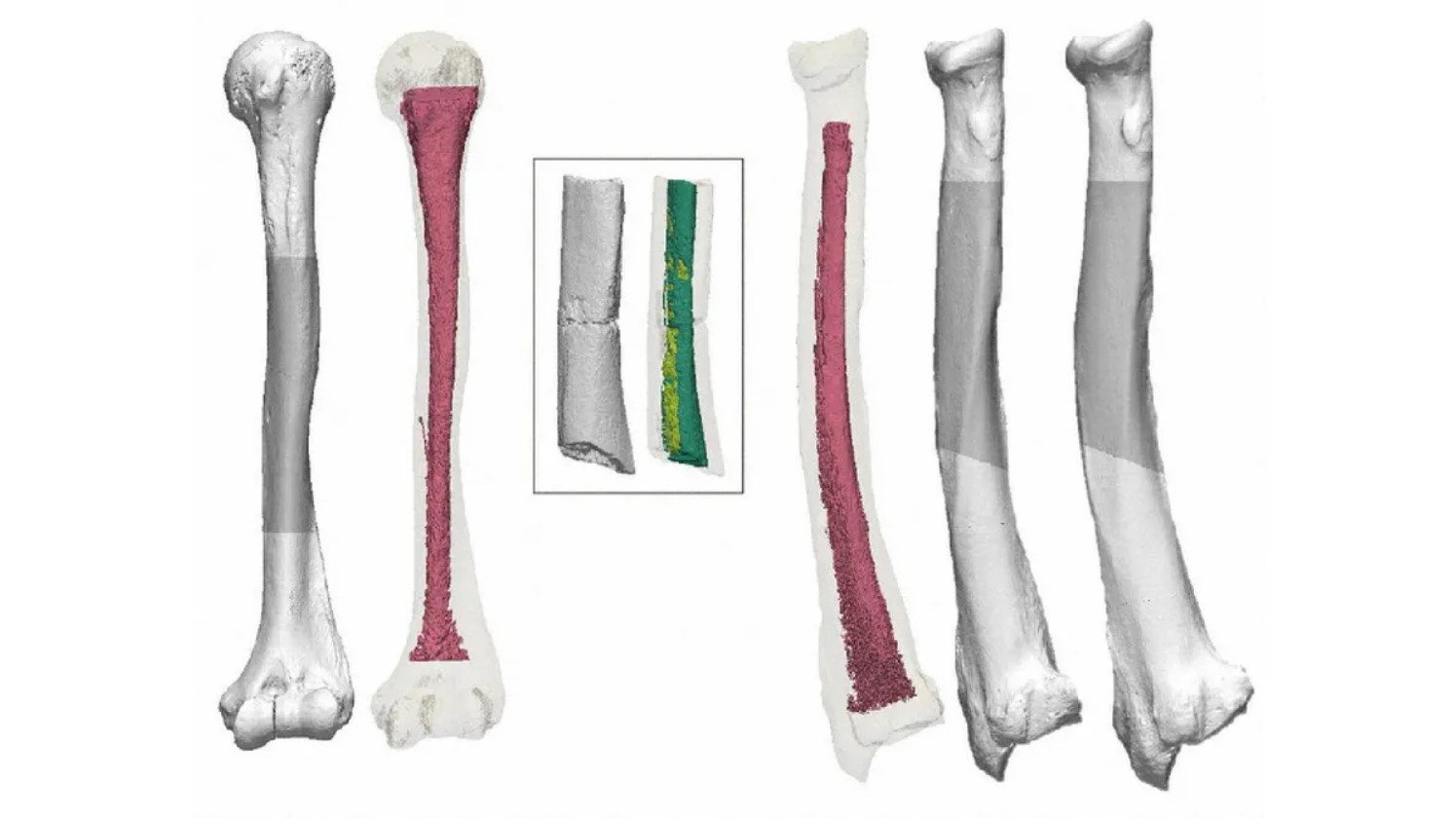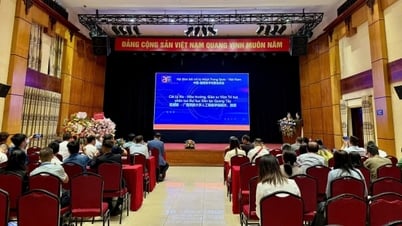In the 1950s, archaeologists excavating near Toyohashi City discovered several fossilized bone fragments, including an arm bone and part of a femur. The discovery was considered a major breakthrough at the time, with an estimated age of about 20,000 years.
Fossil of brown bear
Scientists believe they have found remains of early Homo sapiens or a close human relative, marking the earliest traces of human settlement in Japan.
However, not all researchers agreed. By the late 1980s, doubts began to arise when anatomical analyses revealed significant differences from known prehistoric specimens, such as the famous “Akashi Man” fossil. Some experts suspected that the bones might not be human, but there was not enough conclusive evidence to conclude so.
Now, thanks to advanced CT scanning technology, a team led by the University of Tokyo has determined with certainty that these fossil fragments actually belong to an ancient species of brown bear (Ursus arctos), which lived in the area about 20,000 years ago.
Rewriting the Prehistoric Timeline of Japan

Japan's "Ushikawa Man" fossil, previously thought to be that of a human who lived more than 20,000 years ago, is actually that of a bear. (Photo: Department of Anthropology and Prehistory, University Museum, University of Tokyo)
The re-identification of the Toyohashi fossils is significant for the history of human evolution in Japan. As the fossils were no longer considered human, the title of “oldest human remains” in Japan was passed to other discoveries — notably bone fragments dating from 14,000 to 17,000 years ago, unearthed in the Hamakita area, along the Pacific coast. Evidence suggests that these are the remains of at least two different individuals.
Traces of ancient human activity appear even earlier in the Ryukyu Islands — the island chain connecting Japan and Taiwan. Fossils dating back up to 32,000 years have been discovered there, providing important clues about early migration patterns and human settlement on Japan’s remote islands.
As incredible as it may seem, misidentifying human bones as animal bones is not uncommon in paleontology. A similar case occurred in Alaska in the 1990s, when a bone fragment initially thought to be from a bear was later determined to belong to a Native American woman who lived some 3,000 years ago.
Such errors reflect the enormous challenge of deciphering fossils—especially when analyses rely on outdated technology or incomplete data. Thanks to modern advances such as CT scans and DNA analysis, scientists today can more accurately discern subtle anatomical features, allowing them to more reliably reconstruct the past.
Thanks to advanced imaging technologies and new fossil analysis methods, scientists today have the ability to detect small but significant differences in bone structure and composition — something that was out of reach for previous generations of researchers.
These leaps forward not only improve our understanding of human evolution, but also open up new perspectives on the long and rich history of life on Earth.
Ha Trang (according to University of Tokyo, Glass Almanac)
Source: https://www.congluan.vn/nghien-cuu-tiet-lo-hoa-thach-co-nhat-cua-nhat-ban-khong-phai-con-nguoi-post341621.html


![[Photo] More than 17,000 candidates participate in the 2025 SPT Competency Assessment Test of Hanoi National University of Education](https://vphoto.vietnam.vn/thumb/1200x675/vietnam/resource/IMAGE/2025/5/17/e538d9a1636c407cbb211b314e6303fd)

![[Photo] National conference to disseminate and implement Resolution No. 66-NQ/TW and Resolution No. 68-NQ/TW of the Politburo](https://vphoto.vietnam.vn/thumb/1200x675/vietnam/resource/IMAGE/2025/5/18/adf666b9303a4213998b395b05234b6a)
![[Photo] Prime Minister Pham Minh Chinh chairs meeting on science and technology development](https://vphoto.vietnam.vn/thumb/1200x675/vietnam/resource/IMAGE/2025/5/17/ae80dd74c384439789b12013c738a045)



















![[Photo] Readers line up to visit the photo exhibition and receive a special publication commemorating the 135th birthday of President Ho Chi Minh at Nhan Dan Newspaper](https://vphoto.vietnam.vn/thumb/1200x675/vietnam/resource/IMAGE/2025/5/17/85b3197fc6bd43e6a9ee4db15101005b)








































































Comment (0)